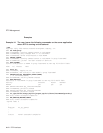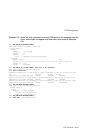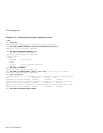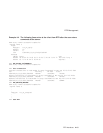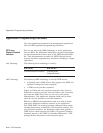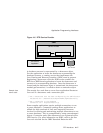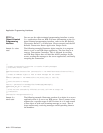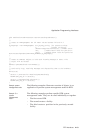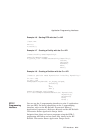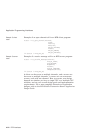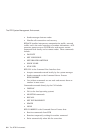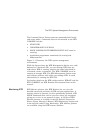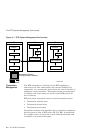Application Programming Interfaces
void CombinationOrderProcessor::StartProcessingOrdersAtoL()
{
//
// Create an RTRKeySegment for all ASCII values between "A" and "L."
//
m_pkeyRange = new RTRKeySegment (rtr_keyseg_string, //To process strings.
1, //Length of the key.
OffsetIntoApplicationProtocol, //Offset value.
"A", //Lowest ASCII value for partition.
"L"); //Highest ASCII value for partition.
StartProcessingOrders(PARTITION_NAMEAToL,m_pKeyRange);
}
//
// Create an RTRData Oobject to hold each incoming message or event. This
// object will be reused.
//
RTRData *pDataReceived= new RTRData();
//
// Continually loop, receiving messages and dispatching them to the handlers.
//
while(true)
{
sStatus = pTransaction->Receive(&pDataReceived);
ASSERT(RTR_STS_OK == sStatus);
sStatus = pDataReceived->Dispatch();
ASSERT(RTR_STS_OK == sStatus);
}
Sample system
management code
The following examples illustrates creation of objects in an
application to perform system management tasks for RTR.
Sample C++
system
management
code
The following examples perform specific RTR system
management tasks. They can be used individually or together.
– The first starts RTR.
– The second creates a facility.
– The third creates a partition in the previously created
facility.
RTR Interfaces 4–19




